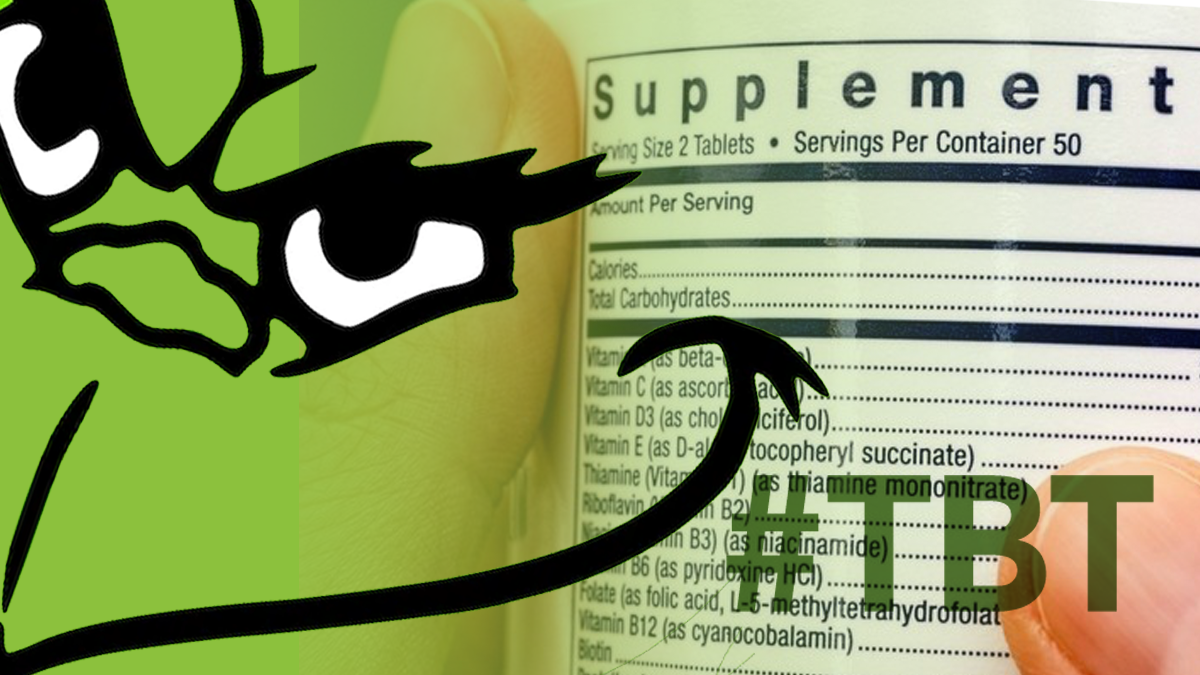— A Reaction to the IOM Report on Daily Values —
by Annette Dickinson, Ph.D.
The following piece was originally released Dec. 30, 2003, in response to a report from the Institute of Medicine (IOM) of the National Academies—CRN has been promoting "the science behind the supplements" for years!
Some nutrition experts, including the former Executive Director of the Food and Nutrition Board Allison Yates and two chairs of the IOM Committee on Uses of the DRIs strongly objected to the IOM recommendation in articles and letters published in the American Journal of Clinical Nutrition. CRN noted in public statements that it recognizes the need to update the basis for nutrition labeling, but that it would oppose FDA adoption of any approach to calculating label reference values that would underestimate desirable target nutrient intakes for many population groups.
The current DVs reflect that CRN's position on this prevailed, and years later, the association launched "Be LabelWise" educating consumers about FDA's changes to the Supplement Facts label requirements based on new DVs. Get a look at the old DVs, proposed updates based on the new science at the time, and those proposed by IOM in the tables at the end of the original document.

Believe it or not, the very scientists who have spent the past decade examining the latest evidence and developing new, revised, up-to-the-minute Recommended Dietary Allowances (RDAs) don’t really believe it is especially important for people to actually consume the recommended amounts of essential vitamins and minerals. In fact, they believe food labeling and fortification levels and dietary supplement formulations should ideally be targeted toward helping people meet “estimated average requirements” — the amount of a vitamin or mineral that would meet the actual needs of half the population.
The Recommended Dietary Allowances are intended to cover the nutritional needs of almost all healthy people. For the past 60 years, the Recommended Dietary Allowances of vitamins and minerals have served as the basis for public policy planning, for the amounts of foods served in the school lunch and breakfast programs, and for national nutrition programs such as WIC. They also provide the basis for nutrition labeling (at least since nutrition labeling was initiated in this country, in 1973). When the label of a breakfast cereal or a dietary supplement shows that it provides 100% of the Daily Value (DV) of a nutrient, that means it provides 100% of the Recommended Dietary Allowance for the population group with the highest allowance — thus assuring that the needs of most people are covered. This has been considered to be sound public policy, providing the greatest benefit to consumers. There is no good reason for reversing this policy, as recommended earlier this month by a committee of the Institute of Medicine.
Not only do these scientists want to switch from the Recommended Dietary Allowances to the Estimated Average Requirements as the basis for nutrition labeling, they also want to use a population-weighted average of the average requirements! What will this mean? It will mean lower nutrient intakes for some of the very population groups that have special needs — the elderly and women of child-bearing age.
The new approach would wipe out the practical impact of some of the best work the Food and Nutrition Board has done in this cycle of revisions to the Recommended Dietary Allowances. It would “average out” the new higher RDA for vitamin D for the elderly, a population that needs a high intake of vitamin D. It would cut the Daily Value for iron by more than 68% compared to the current label value and dramatically lower the Daily Value for folic acid, in both instances leaving women of childbearing age particularly vulnerable. For the entire population, it would lower Daily Values for all three of the B vitamins that are believed to lower homocysteine levels and protect against heart disease. The Daily Value for vitamin C, which would have gone up by 50% if the highest new RDA were used as the basis, would instead remain virtually the same — utterly failing to reflect the new science.
These are not merely labeling changes. The new proposal would also change the reference point for fortification levels and for dietary supplement formulation. Many products are based on the notion of providing 100% of the DV for a variety of nutrients, and if FDA were to adopt the new labeling scheme proposed by the Grinches of Nutrition, almost all the nutrient levels in these products will go down, thereby raising the possibility that a good portion of the population will not get the nutrients they need.
The Food and Drug Administration had an idea similar to this, about a decade ago, but it was abandoned after a storm of protest developed. The same fate should befall this misdirected proposal, and the sooner the better.
See CRN's Be LabelWise site for more.
This is a flashback in our #50yearsofCRN celebration of the association's 50th anniversary.


